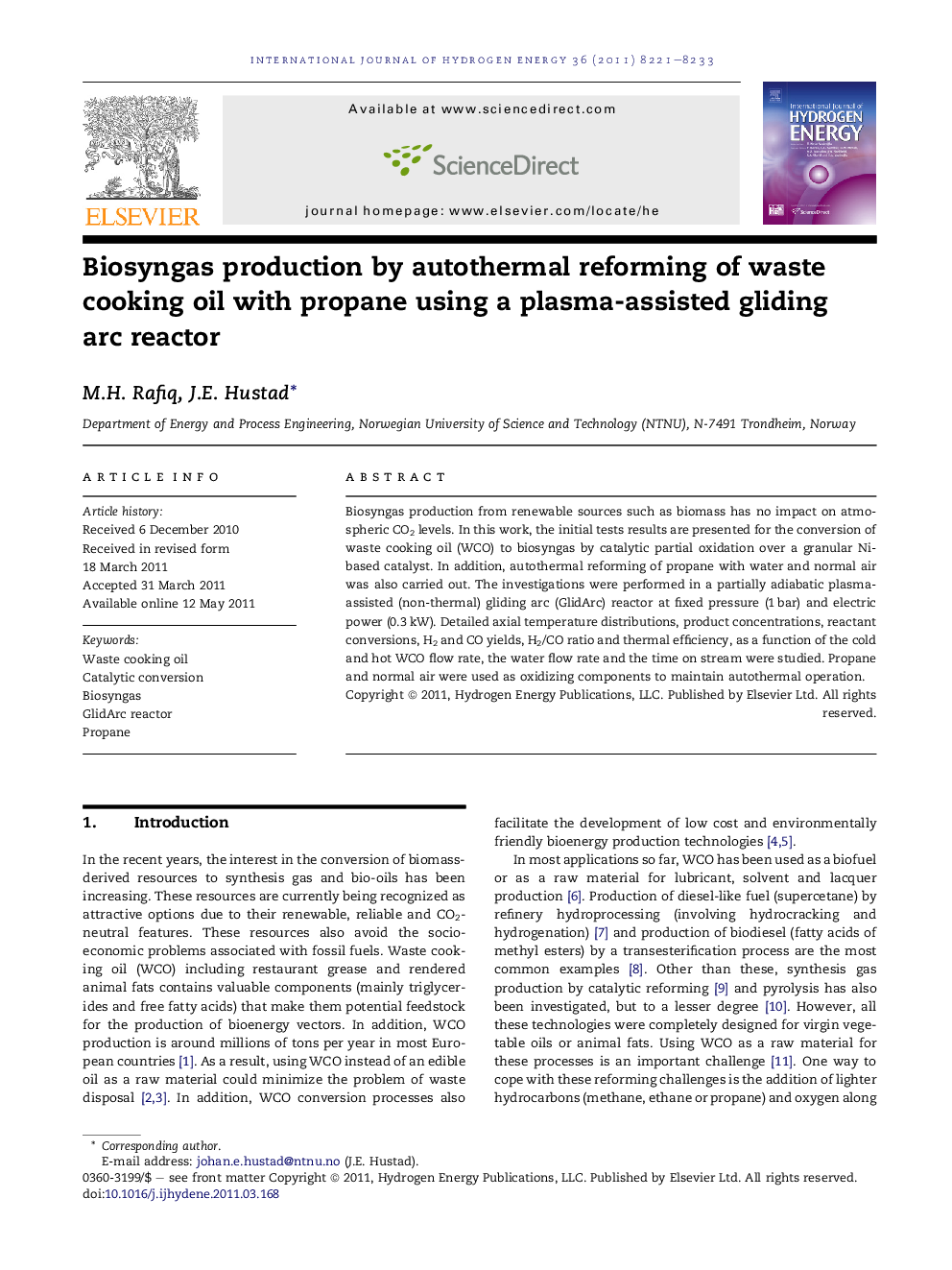| Article ID | Journal | Published Year | Pages | File Type |
|---|---|---|---|---|
| 1279135 | International Journal of Hydrogen Energy | 2011 | 13 Pages |
Biosyngas production from renewable sources such as biomass has no impact on atmospheric CO2 levels. In this work, the initial tests results are presented for the conversion of waste cooking oil (WCO) to biosyngas by catalytic partial oxidation over a granular Ni-based catalyst. In addition, autothermal reforming of propane with water and normal air was also carried out. The investigations were performed in a partially adiabatic plasma-assisted (non-thermal) gliding arc (GlidArc) reactor at fixed pressure (1 bar) and electric power (0.3 kW). Detailed axial temperature distributions, product concentrations, reactant conversions, H2 and CO yields, H2/CO ratio and thermal efficiency, as a function of the cold and hot WCO flow rate, the water flow rate and the time on stream were studied. Propane and normal air were used as oxidizing components to maintain autothermal operation.
► Plasma-assisted GlidArc reactor for the conversion of waste cooking oil (WCO) to biosyngas. ► Propane and normal air were used as oxidizing components to maintain autothermal operation. ► A maximum amount of water flow rate, suitable for stable operation and soot free synthesis gas formation. ► Then maximum amount of cold and hot WCO flow rate was found to obtain the same objective.
